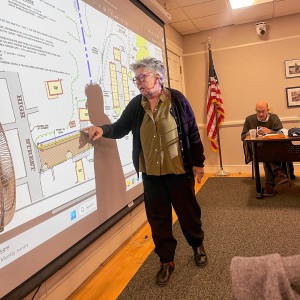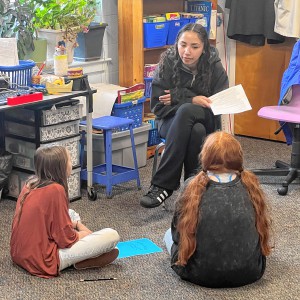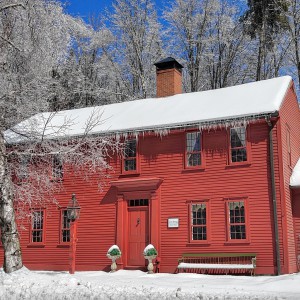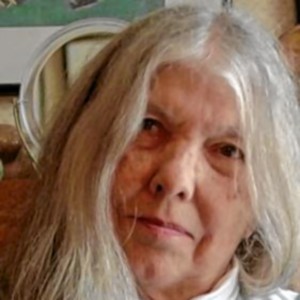Antrim couples breed Maine Coon cats
| Published: 11-30-2017 9:20 AM |
Buster is massive.
Stretched out in the arms of his owner, Marie Harriman, the tuxedo-colored Maine Coon is exemplary of his breed – nearly 20 pounds, tufted ears atop his huge head, and a fluffy coat. Buster doesn’t seem to mind the treatment, docilely allowing Harriman to hold him aloft to show his size.
“They’re called ‘gentle giants’ for a reason,” remarks Chris Condon, Harriman’s husband and partner in their Maine Coon breeding business, At Last Cats.
Harriman never intended to transform the couple’s Antrim home into a cattery – that’s a boarding or breeding establishment for cats – she said in an interview last week. When she was young, she would idly imagine herself an idyllic future where she owned an inn and bred Maine Coons. Then she met Condon, and his allergy to cats put an end to that dream.
Or, it should have.
“Claritin is a wonderful thing,” said Condon sitting calmly in a room filled with half a dozen full-grown, fluffy cats and another half dozen kittens with no signs of distress, even when one cat jumps on the table to demand attention, quickly followed by a wave of her fellows.
When Harriman and Condon met, she said, she already had two Maine Coon mixes. They decided to keep those two, despite Condon’s allergies, until they passed, and those would be the last of Harriman’s cats. But Condon fell in love with the breed that Harriman had found love for years before, they decided to get two more males, Fargo and Flash – this time, full-blooded Maine Coons.
That was the start of it, said Harriman. Now, 12 years later, they have seven permanent breeders – six female and one male, and have six litters of kittens a year.
Article continues after...
Yesterday's Most Read Articles
 Peterborough Planning Board approves 14-unit development near High Street
Peterborough Planning Board approves 14-unit development near High Street
 Peterborough firefighters continue fishing derby tradition
Peterborough firefighters continue fishing derby tradition
 Franklin Pierce students help foster literacy at Rindge Memorial School
Franklin Pierce students help foster literacy at Rindge Memorial School
 ConVal attorney answers withdrawal questions
ConVal attorney answers withdrawal questions
 Scott Bakula starring in Peterborough Players’ ‘Man of La Mancha’
Scott Bakula starring in Peterborough Players’ ‘Man of La Mancha’
 HOUSE AND HOME: The Old Parsonage in Antrim is a ‘happy house’
HOUSE AND HOME: The Old Parsonage in Antrim is a ‘happy house’
Maine Coons are a popular pedigreed cat. Their main characteristic is their size. They continue growing for years, and at full-size, males can be up to 20 pounds, females up to 13. They’re also highly social and chatty cats.
“They’re very dog-like,” said Harriman. “They’ll follow me around the house. They always want to be with you.”
They’d follow her into the shower, if she let them, she said – Maine Coons have a coat that is water-proof, so they can enjoy water and even swimming.
It’s a time-consuming effort, said Harriman. Just the basic care of the cats – litter scooping, feeding up to four times a day, playing with the cats and brushing, brushing, brushing their double coat is a significant time commitment, but when you’re breeding pedigreed cats, there’s more to it than the regular chores that come with cat ownership. For one thing, At Last Cats aren’t just pets. They’re show cats.
Among the cats lazing in cat trees, sprawling across Condon’s laptop and perched on the back of the couple’s couch are champions – some quadruple or triple champions. (And one that doesn’t show, said Condon, because she doesn’t enjoy it, and no one can make a cat do something she doesn’t want to do.) There is a window in the couple’s kitchen filled with ribbons and accolades for their accomplishments.
And they’re breeders. And as a responsible breeder, that means regular cardiac ultrasounds and gene testing to check for heart problems that can plague bigger cats, and lots of vet visits. And when kittens are born – once every two months or so – Harriman might have to assist mom with bottle feeding the newborns.
At the end, they have a litter of kittens, each of which will sell for $1,200.
And Maine Coons are in demand, said Harriman. Last year, the couple bred about 25 kittens, and had 250 applications. Which means they can afford to be picky about where their cats go, which makes it easier to let them go, said Harriman. Harder, she said, is when it comes time to retire their breeding cats, which usually means letting them go to a new home.
“We have to, or we would just be over-run,” said Harriman.
Though, sometimes, it’s difficult not to get attached. Like Buster, their breeding male, who often sleeps with them and is a big cuddler. When he gets to retirement age, said Harriman, he may be one of the ones who finds a permanent home in the cattery, along with their original two original Maine Coons.

 Jarvis Coffin: Off the Highway – Calmly on the waters
Jarvis Coffin: Off the Highway – Calmly on the waters Words About Wilton: Gail Hoar – Protecting and serving
Words About Wilton: Gail Hoar – Protecting and serving
